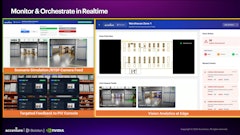
The Coronavirus disease (COVID-19) pandemic hit supply chains hard, with 75% of companies experiencing disruptions. As a result, businesses have been forced to rethink their supply chains, retooling systems to be anti-fragile — or resilient under duress.
In the previously stable economy, many corporations took their supply chain for granted, treating them as commodities. Now, the pandemic is a forcing mechanism for many to rethink their strategies and bolster their supply chains to avoid major disruptions to their businesses.
Break the norm with tools that promote digital agility
While most companies have embraced new technologies across their supply chains, the misuse of those technologies and a reliance on outdated systems are key contributors to fragile supply chain infrastructures. To buck this trend, leverage technology that makes your supply chain anti-fragile. Here’s how to get started.
- Digitize manual processes
Because many companies previously took their supply chains for granted and did not innovate their technical infrastructure, inefficient manual processes went unchecked. Take document assembly, for example. Millions of documents that go through supply chains daily — purchase orders, statements of work, shipping orders and contracts — are prone to slow processing and human error when done manually. And, these risks contribute to a fragile supply chain riddled with process bottlenecks.
To mitigate process bottlenecks, you can leverage machine learning (ML) and artificial intelligence (AI) technology to make document generation automatic. Digitized processes include automated RFPs, easier supplier communications with automatic emails, and automated web forms to assist supplier data management and compliance review.
Applied on a broader scale, automating high-volume, repetitive processes can boost output, speed up fulfillment and grow revenue.
- Make weaknesses resilient
When incorporating supply chain technology, many companies primarily focus on internal processes. While internal alignment is vital for success, you must also consider your external enterprise to be truly anti-fragile.
At the start of the pandemic, supplier dependence became the Achilles’ heel for many supply chains. We glimpsed this weakness earlier in the year, when many companies were impacted by production decreases in China. Supplier dependence during COVID-19 also comes with a price — the average lead time for inputs in China and Korea are still at or above twice as long as “normal” since the pandemic started.
Before the pandemic, many organizations reviewed their supply chain on a quarterly basis, which is entirely too infrequent. To build and maintain anti-fragility, you must assess your supply chain in real time to evaluate all factors of resiliency. For example, consider backup suppliers if your primary ones were to ever shut down. Additionally, assess your security profile and competitive landscape to see where your supply chain may be deficient.
Knowing the path after plan A fails will make your supply chain more resilient to potential changes. And, when you pair this planning with creating smart, automated workflows, your supply chain can adapt for rapid micro-changes from long term patterns and large changes from sudden disruptions.
- Execute with speed and agility
The integration of automation, real-time assessment and resilient planning means nothing without agile execution. To create an anti-fragile supply chain, process speed has to match market demands.
Risk aversion, while important to a secure supply chain, also creates inflexibility. Common practices like months-long onboarding processes for new suppliers encourage fragility by nature. The moment you need to switch suppliers in an emergency, strenuous onboarding processes make it difficult to keep your supply chain moving.
It may seem counterintuitive to reduce the time you take to vet and onboard a new supplier. However, because technology like no-code platforms, automation, AI and ML are built to reduce errors and improve workflow efficiency, you’ll be able to onboard in less time, while still taking risk into consideration. The time you save in pivoting your supply chain could also mean the difference between failure and survival when the world puts your company to the test, as it has during the pandemic.
- Leverage a no-code platform
To effectively create an anti-fragile supply chain that is digitized, resilient and agile, you can leverage a no-code cloud platform. A no-code platform is an enterprise solution that creates smart workflows through digital, automation, ML and AI technologies.
Many organizations apply the latest and greatest technology to their supply chains thinking it will be a one-time cure-all for their problems. Too many companies try to fill the gaps in their supply chains with multiple, expensive software systems that are not interoperable with established systems, further complicating processes. Because there are many unique pieces to your company’s supply chain, a no-code platform can help connect the dots across the various workflows of your business. Think of the platform as a puzzle master that brings disparate pieces together by connecting systems into a single digital thread.
A no-code platform also enables employees to digitize manual processes through a user-friendly interface that requires zero software development skills. As a result, the platform allows business users closest to the customer to solve problems that arise with no need for significant adjustments to your processes. This ability allows your company to remain agile and make quick changes to your supply chain in lieu of a traditional software development cycle, which can be a time-consuming process.
Anti-fragility is no longer a mere business concept — it’s a plan of action necessary for sustainable success. By leveraging a no-code platform to build a resilient and risk-mitigated supply chain, you can successfully use the pandemic as a springboard for change and innovation.





















